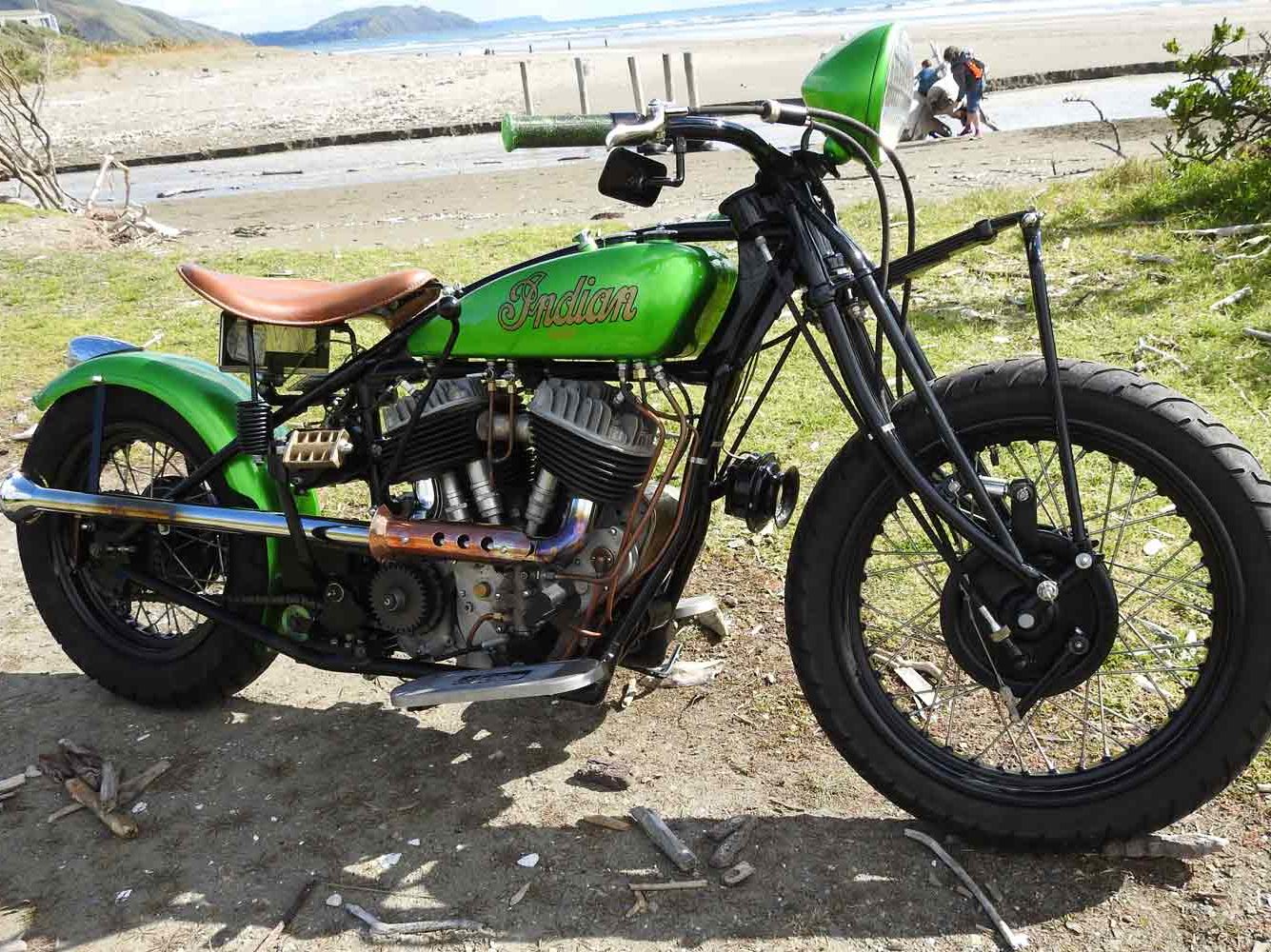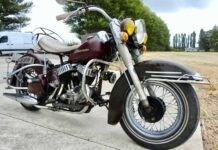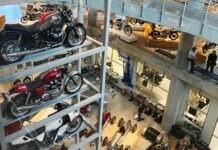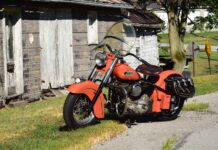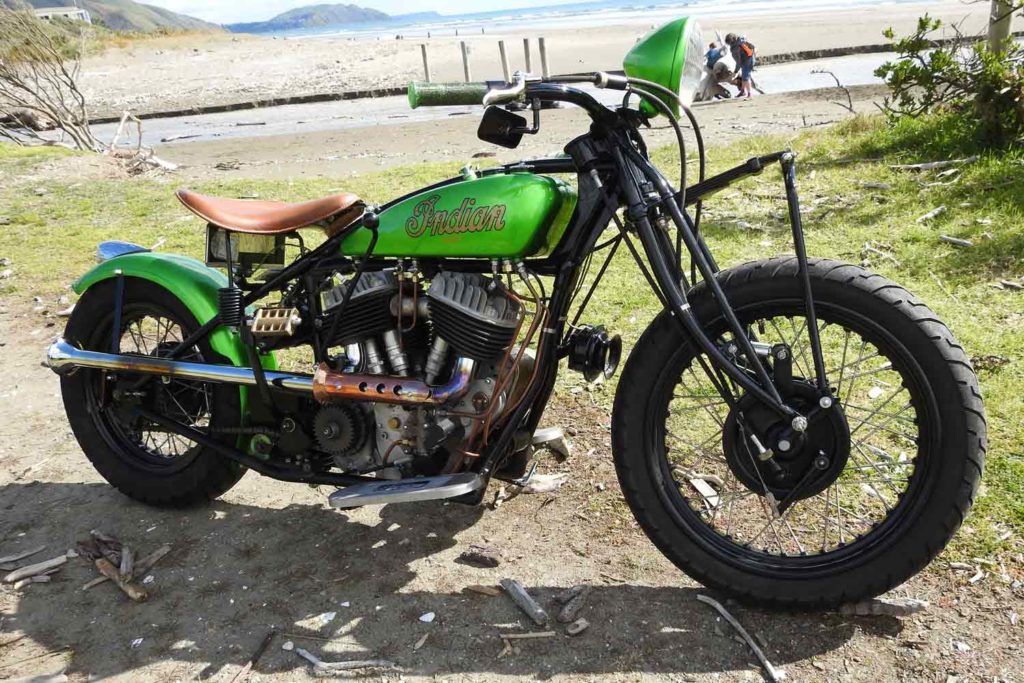
New Zealand has a proud history of motorcycle achievers, most notably John Britten, who built a radically innovative superbike from scratch in the 1990s, and the legendary Burt Munro, who gained worldwide notoriety after the release of the 2005 film The World’s Fastest Indian.
Related Story: Indian Motorcycle celebrates Burt Munro’s legacy
Indian motorcycles have always been prominent in New Zealand thanks to a 1930 trade embargo between the United States and Britain caused by the Great Depression. Back then, the bikes Indian couldn’t sell to the British ended up being exported Down Under. By the time WWII started, some 5,000 Indian 741Bs had been exported to New Zealand.
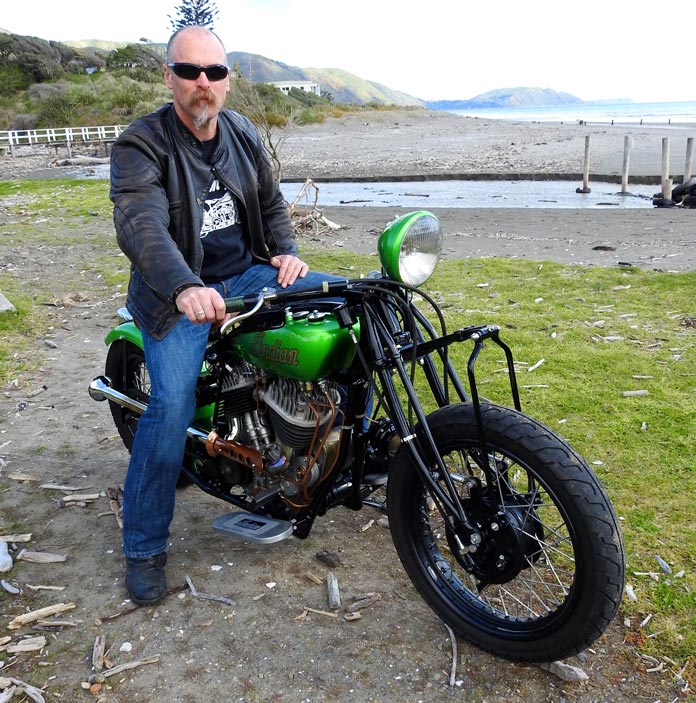
So it’s not surprising there are some interesting Indian specials lurking around NZ, like Rob McIntyre’s Indian Chout.
Related Story: Call of Duty: WWII to feature Indian Scout 741B
A “Chout” is an Indian Scout fitted with a V-Twin Chief motor, a fairly common crossbreed during the early days. The most famous of this hybrid model belonged to American Max Bubeck, who clocked 135.6 mph on his Fred Shunk-built Chout at California’s Mojave Desert in June 1948.
McIntyre’s attraction to old V-Twins began when he worked alongside a guy who owned a Harley-Davidson WLA, which was occasionally used to round up sheep and such. This fired McIntyre’s passion for vintage machines.

After coming back home to New Zealand, McIntyre was initially looking for an old Harley but couldn’t find one. Meanwhile, he learned that the country’s armed forces sold off many of their military 741B Indians as war surplus after WWII. Subsequently, he collected a bunch of 741 parts until he had enough material to build a complete bike in the mid-1990s. It was a standard version with the motor bored out from 500cc to 600cc, which he ran for 10 years.
Some spare cash translated into buying a 1947 Chief on eBay in the U.S., a bike he rode until 2007 when the motor blew up and needed to be rebuilt. In search of expertise to rebuild the motor, he went to Perry Moore, the man responsible for building the motor for the replica used in The World’s Fastest Indian.
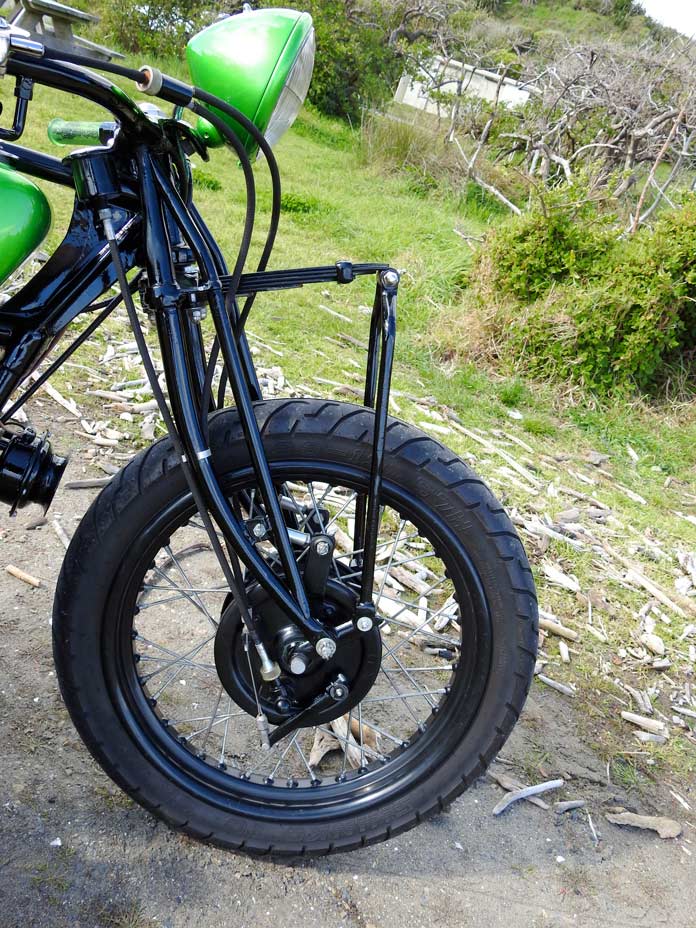
What followed was another five years of riding his Chief around NZ without any problems. Even so, McIntyre still wanted something more unique. In 2012, he began putting together plans for creating an Indian Chout.
Related Story: 2022 Indian Scout Rogue Debuts
The project started as a pile of parts consisting of a 1930 Indian Scout 101 frame and a late-1940s Chief engine. He built it as a period-style bobber/hot rod, as the 101 frame was arguably the best-handling chassis ever made by Indian. The 101 model Scout originally had a 37ci (600cc) engine, later enlarged to 45ci (750cc), and was in production from 1928 through 1931.

To fit the taller Chief motor in the Scout chassis, the frame crossmember under the tank was modified to provide necessary clearance. He fabricated a chain tensioner to prevent the chain from rubbing on the frame, which also helped alleviate chain snatch. McIntyre’s Chout is all Indian apart from the Harley rear fender that he cut to fit his needs. Front suspension is handled by a 1930 Indian Scout 101 leaf-spring girder item.

The Chief engine was rebuilt by Dave McPhail from Harley Speed & Custom, with many new parts needed, as they were either missing or knackered. The motor was upgraded to 74ci (1,200cc) and fitted with a set of Bonneville cams and followers installed to get a little extra performance. The original Linkert carb was left standard, as was the 3-speed transmission. To get some decent lighting, McIntyre converted the electrics into a 12-volt system with wiring run inside the frame to keep things looking tidy.
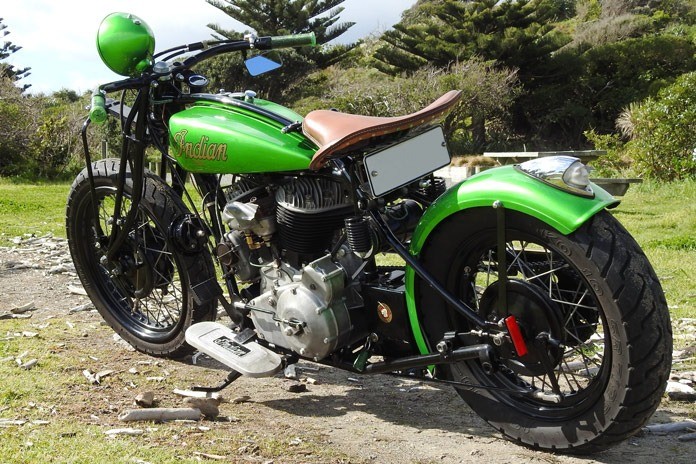
When it came time to paint the bike, he took on the job of the frame and a few other parts himself. The tank, light, and guard in Kawasaki Golden Blazed Green were left to a professional.
The seat and headlight are original Indian items, while the custom exhaust was done by Cycleworks in Upper Hutt. The front brakes consist of twin Indian 741B drums, and the rear is fitted with a 741B drum. The 19-inch front wheel employs two 741B hubs back-to-back for dual brakes, while the rear wheel is a 16-inch Indian Chief with a 741B hub.
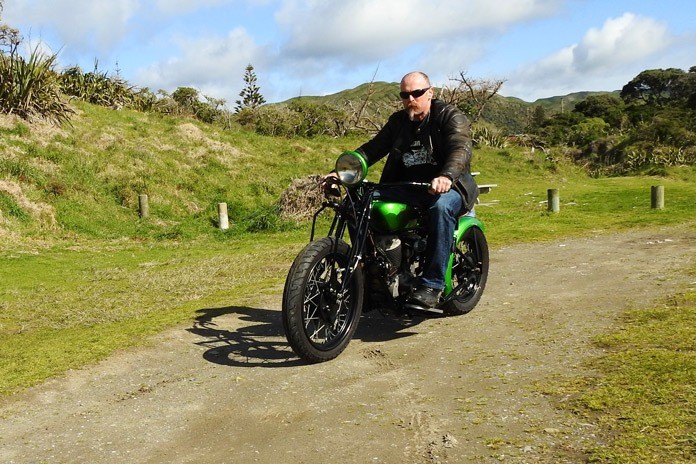
McIntyre’s bike is apparently a joy to ride, and he says it can easily rumble along at 60 mph all day with plenty of power left for passing. McIntyre says he’s really happy with the way his Chout turned out. His only complaint is that the fuel tank is too small.


